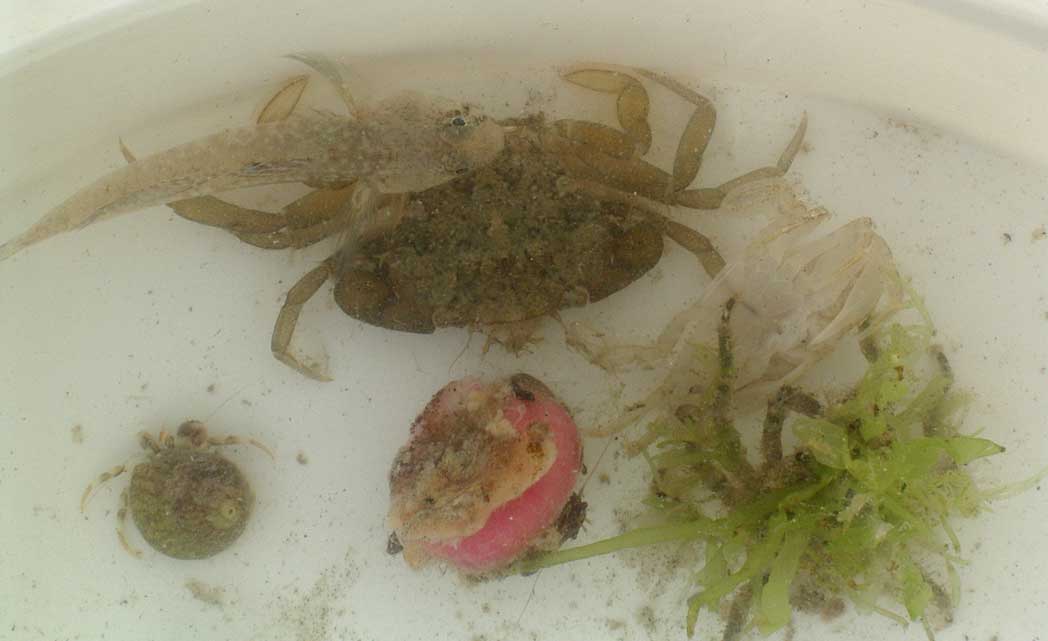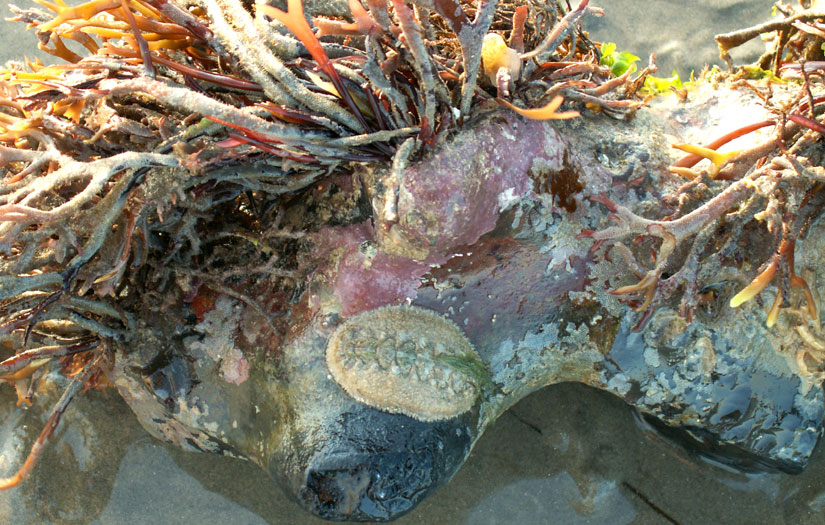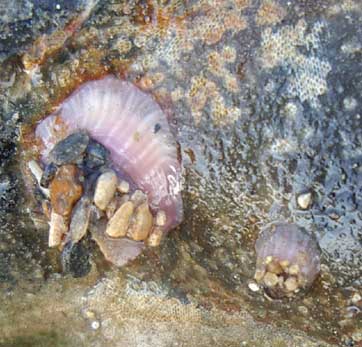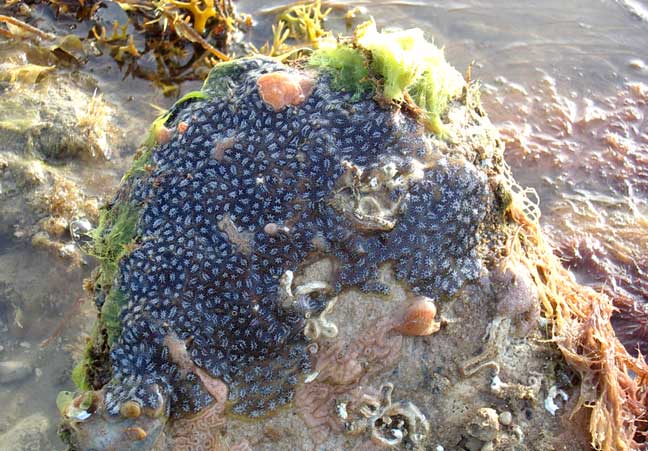-
East
Worthing Beach, West Sussex (south of the Half Brick PH):
7
September 2006
-
-
On the
beach by the Half Brick at east Worthing, a dozen
or more Velvet Swimming
Crabs hid under large boulders with a
fairly usual collection of rock pool life including one Oyster
bigger than my hand, three large Chitons,
Acanthochitona
crinita, (a small mollusc), a 20 cm green
Atlantic
Eel, and adult and a juvenile 5-Bearded
Rockling,Ciliata
mustela, and frequent Piddocks
(a bivalve mollusc) burrowing in the chalk boulders. Snakelocks
Anemones, Anemonia viridis,
were frequently seen, more often overlooked, with Sand
Gobies Pomatoschistus
minutus, noted in the shallow sandy
pools, a few Rock Gobies Gobius
paganellus,Shore
Crabs,
small
Squat
Lobsters, and a handful of Hairy
Crabs. On the underside of boulders, there
were hundreds of the tiny Long-clawed Porcelain
Crabs. Less obvious were colonies of Star
Ascidian and bryozoans
coating the rock surfaces.
-
BMLSS
Crabs
-
BMLSS
Piddocks
-
5
August 2006
A
morning low tide visit to the beach by the Half Brick (East Worthing) was
not very fruitful and the only fish of note was a baby pipefish
discovered by Katherine
Hamblett. Althought it was too small to be positively identified it
was probably a Worm Pipefish, Nerophis
lumbriciformis, which was unusual
this far east up the English Channel, but it is increasing being discovered
along with the Daisy Anemone,
Cereus.
Snakelocks
Anemones,
Anemonia viridis,
were frequently seen, at least twenty were noted. There were occasional
small Beadlet Anemones,
Actinia
equina, mostly of reddish-brownish
hues.
In
the shallow pools nearest the shore, there were shoals of very small bottom
living fish. These were the young Common
Cobies, Pomatoschistus microps. There
were a handful of larger gobies and these were
Rock
Gobies, Gobius paganellus.
The
largest of the local chitons, the mollusc
Acanthochitona crinita was discovered on
the underside of a rock.
Shore
Crabs
were seen more often than usual on this shore and there were a dozen medium-sized
ones. Other crabs were much less than usual with just a handful of Hairy
Crabs and small Edible
Crabs. Very small Squat
Lobsters and small Common
Hermit Crabs (in topshells) were both
frequently seen. Mysids and Hooded Shrimps Athanas nitescens,
were seen under rocks with very frequent Long-clawed
Porcelain Crabs on the underside of rocks
and boulders (but only suitable rocks comprising about 5% of the promising
ones searched). Small prawns shot backwards in the shallow pools.
Large ragworms
lived in the holes in a few of the chalk rocks.
BMLSS
Rockpooling
BMLSS
Crabs

Put
the cursor over the animals and click on the image for more information
1
August 2004
Afternoon
The
beach between Worthing and Lancing seems an unpromising area for rockpooling
but it consistently provides a variety of some of the less usual small
fish and crabs found between the tides. Katherine
Hamblett and
Tacita French discovered a young first year
Worm
Pipefish, Nerophis
lumbriciformis, which is unusual this
far east up the English Channel.
The
first crab has teeth between its eyes and the second one does not.

There
were unusual crabs (photographed above) as well as more common crustaceans
like small Common Hermit Crabs, Pagurus
bernhardus, and Squat
Lobsters, Galathea squamifera, one
Short-legged
Spider Crab
Eurynome
aspera, and a handful of small Long-legged
Spider Crabs,
Macropodia
rostrata,
BMLSS:
Crabs
Sea
Anemones on this shore included at least a handful seen of Daisy
Anemones Cereus
pedunculatus, (with mauve/purple columns), and Snakelocks
Anemones Anemonia viridis,
which both reach their most easterly shore distribution at Lancing.
BMLSS:
Sea Anemones

EMail
Address for sending in wildlife reports from the lower Adur valley
Only
a selection will be included and only reports with the name of the reporter


















